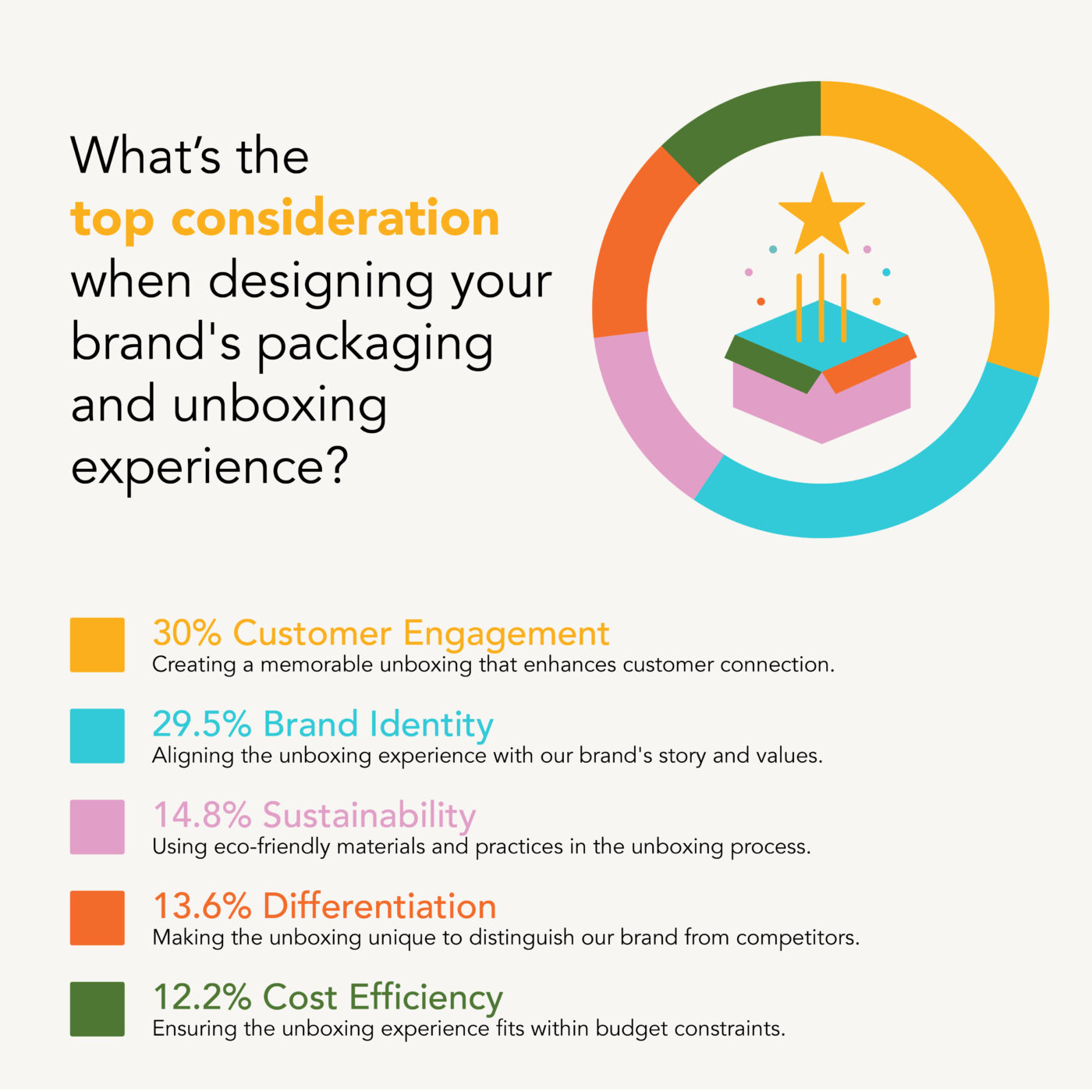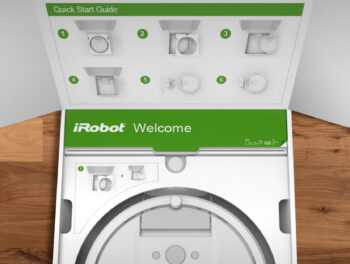Your brand’s packaging is more than just a container—it’s a powerful tool for storytelling and customer engagement.
At Motiv, we recognize that the unboxing experience serves as a pivotal touchpoint in your brand’s journey. Our expertise lies in crafting packaging designs that not only resonate harmoniously with your brand’s values but also forge a lasting impression on your customers.
So what are the top factors to consider when designing the packaging of your product? Here are the results of our survey.
The Top Factors for Packaging Design
Our recent survey shows that 60% of brands prioritize customer connection and brand identity in their packaging design and unboxing experiences.
Here’s a breakdown of factors:

- Brand Identity (29.5%)
- Customer Engagement (30%)
- Differentiation (13.6%)
- Sustainability (14.8%)
- Cost Efficiency (12.2%)
Here’s our analysis of the factors that go into packaging design:
Primary Factors
The survey results shed light on the key priorities that brands consider when designing their packaging and unboxing experiences.
Notably, many respondents highlighted:
- Brand Identity: (29.5%) Aligning the unboxing experience with our brand’s story and values.
- Customer Engagement: (30%) Creating a memorable unboxing that enhances customer connection.
Customer engagement (30%) and brand identity (29.5%) as their primary concerns. This suggests a strong emphasis on crafting packaging that not only aligns with the brand’s narrative and values but also cultivates a meaningful connection with customers. Brands see the unboxing experience as a key part of their design strategies. They want to make their brand stronger and improve customer relationships by making these elements a key part of their designs.
Secondary Factors
These factors were considered as supporting elements in the packaging design process.
- Differentiation (13.6%) – Making the unboxing unique to distinguish our brand from competitors.
- Sustainability (14.8%) – Using eco-friendly materials and practices in the unboxing process.
- Cost Efficiency (12.2%) – Ensuring the unboxing experience fits within budget constraints.
While sustainability (14.8%) and cost efficiency (12.2%) are also important, they are secondary to the more emotionally driven factors of engagement and brand alignment. This suggests that while brands consider environmental impact and budget constraints, they are unwilling to compromise the customer experience or brand integrity for these factors. The balance between these priorities shows the need for design solutions that combine sustainable practices and cost-effective strategies without taking away from the brand’s story or customer engagement.
Although not as high a priority as other factors, differentiation (13.6%) is still a critical aspect of the unboxing experience. Brands strive to stand out in a competitive market, but they must do so without losing their connection to customers or diluting their brand identity. The challenge is to find innovative ways to differentiate that enhance the overall experience and reinforce the brand’s core values.
Closing Out: Using These Factors When Designing Packaging
The unboxing experience is an extension of the brand itself—a moment to engage customers and solidify their perception of the brand. Effective packaging design strategies should prioritize creating memorable experiences that align with the brand’s identity. Sustainability, cost efficiency, and differentiation should be considered as supporting elements in the design process.
Motiv is a packaging design firm with over twenty years of packaging experience, designing innovative packaging that embodies the ideals of beauty, practicality, honesty, and sustainability. Let’s discuss your next packaging design project.




